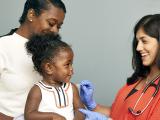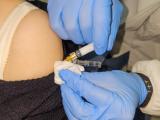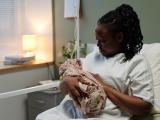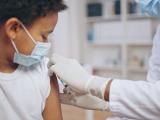Dec 7, 2005 (CIDRAP News) – If public health emergency preparedness were a college class, the federal government would be considered a poor pupil by the nonprofit organization Trust For America's Health (TFAH), which gives the government a D+ in a new report released yesterday.
That grade was based on a survey of 20 leading public health experts, who used 12 criteria to measure preparedness.
Particular federal efforts and programs were evaluated as follows:
- The Strategic National Stockpile merited only a C+.
- The Cities Readiness Initiative, biosurveillance activities, pandemic influenza planning, and management of federal funds and programs got a C–.
- Coordination of federal agencies, establishment of measurable goals and directions, BioWatch, and the federal health response to Hurricane Katrina received a D.
- The smallpox vaccination program received a D–.
This critique of federal readiness is part of a broader annual effort to assess US emergency preparedness. This is the third year TFAH has made such an assessment. Although the nation has made "considerable progress" in improving public health preparedness, TFAH said that the pace must be stepped up, and better policies and funding are needed at all levels of government.
The organization's goal, the report says, is "to help the nation move toward an improved, strategic 'all-hazards' system for protecting the public's health, capable of responding effectively to health threats posed by diseases, disasters, and bioterrorism."
TFAH makes a series of recommendations for improving leadership, accountability, public efforts, and basic response capacity that include:
- Preventing public health preparedness and bioterrorism grants to states from falling below $950 million a year, "the estimated allocation needed for sustainable progress";
- Improved focus on effective use of health services grants;
- Improving capabilities for mass-casualty events, including public health and hospital efforts;
- Strengthening leadership by having a single, accountable official responsible for bioterrorism and public health preparedness at the US Health and Human Services (HHS) Department;
- Increasing accountability by developing standardized performance measures for bioterrorism preparedness from the CDC or consistent reporting of progress and/or vulnerabilities to both Congress and the American people.
"The fact that emergency tests prior to Hurricane Katrina revealed vulnerabilities in the levees protecting New Orleans, yet no actions were taken based on these findings provides a strong example" of government failings, TFAH says.
In addition to critiquing federal preparedness, the group also assessed the preparedness of states and some cities on the basis of the following 10 "key indicators" of preparedness:
- "Green" status for distribution of medical supplies from the Strategic National Stockpile
- Sufficient Biosafety Level 3 labs
- Enough scientists to do lab tests for anthrax or plague
- A disease tracking system to collect and monitor data via the Internet
- A plan or a state-local planning effort to care for patients at non-healthcare facilities
- Plans, incentives, or provisions to ensure continuity of care in the event of a major disease outbreak
- An infection control professional available within 15 minutes, around the clock
- Working with state or local health agencies to prioritize hospital workers' receipt of vaccine or antivirals
- Sufficient medical equipment and supplies for "10 additional patients requiring ventilation"
Those assessments were based on public sources, Centers for Disease Control and Prevention (CDC) reports, a survey by the Association of Public Health Laboratories (APHL), a survey by TFAH and the Association for Professionals in Infection Control and Epidemiology (APIC), public releases from states, and interviews with government officials, TFAH noted.
Overall, the highest-scoring states were Delaware, South Carolina, and Virginia, which satisfied 8 of the 10 key indicators, followed by Florida, Georgia, New Jersey, New York, and Texas with 7. The lowest-scoring states were Alabama, Alaska, Iowa, and New Hampshire with 2 of the 10 indicators, and Arkansas, Idaho, Maryland, and Montana with 3. Only seven states and two cities were rated as prepared to provide emergency vaccines, antidotes, and medical supplies from the Strategic National Stockpile.
Ironically, this poor report card on the nation's preparedness comes a day after the disbanding of the 9/11 Commission. At the farewell meeting, commissioners handed out a report card that gave the US government failing grades for its actions to prevent another attack like the one on Sept 11, 2001, according to a story published today in the Minneapolis Star Tribune.
See also
TFAH news release, with links to the executive summary and complete report
http://healthyamericans.org/reports/bioterror05/
CIDRAP News story on TFAH 2004 report
https://www.cidrap.umn.edu/anthrax/report-most-states-still-unready-bioterrorism
CIDRAP News story on TFAH 2003 report
http://healthyamericans.org/reports/bioterror05/


















